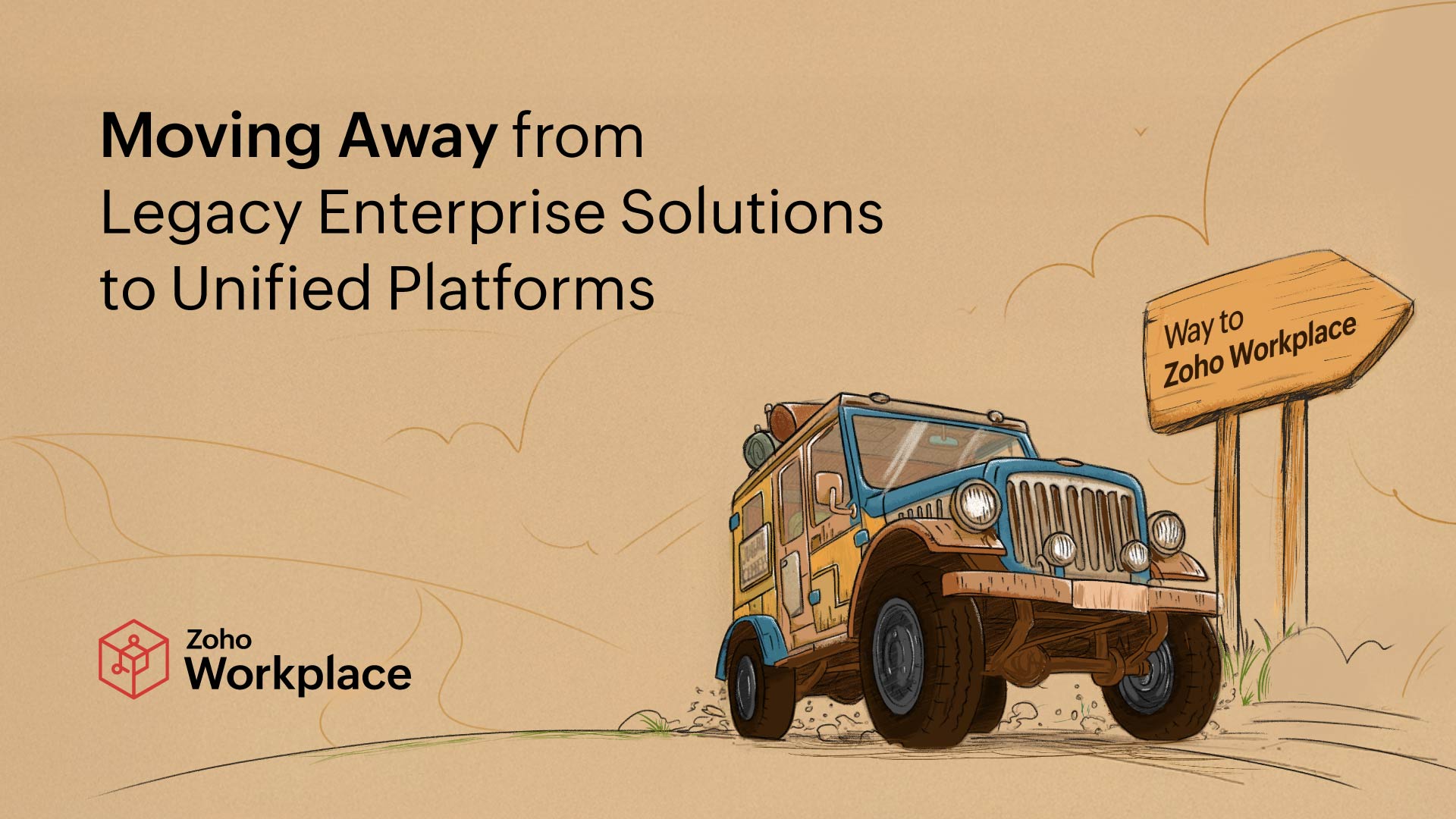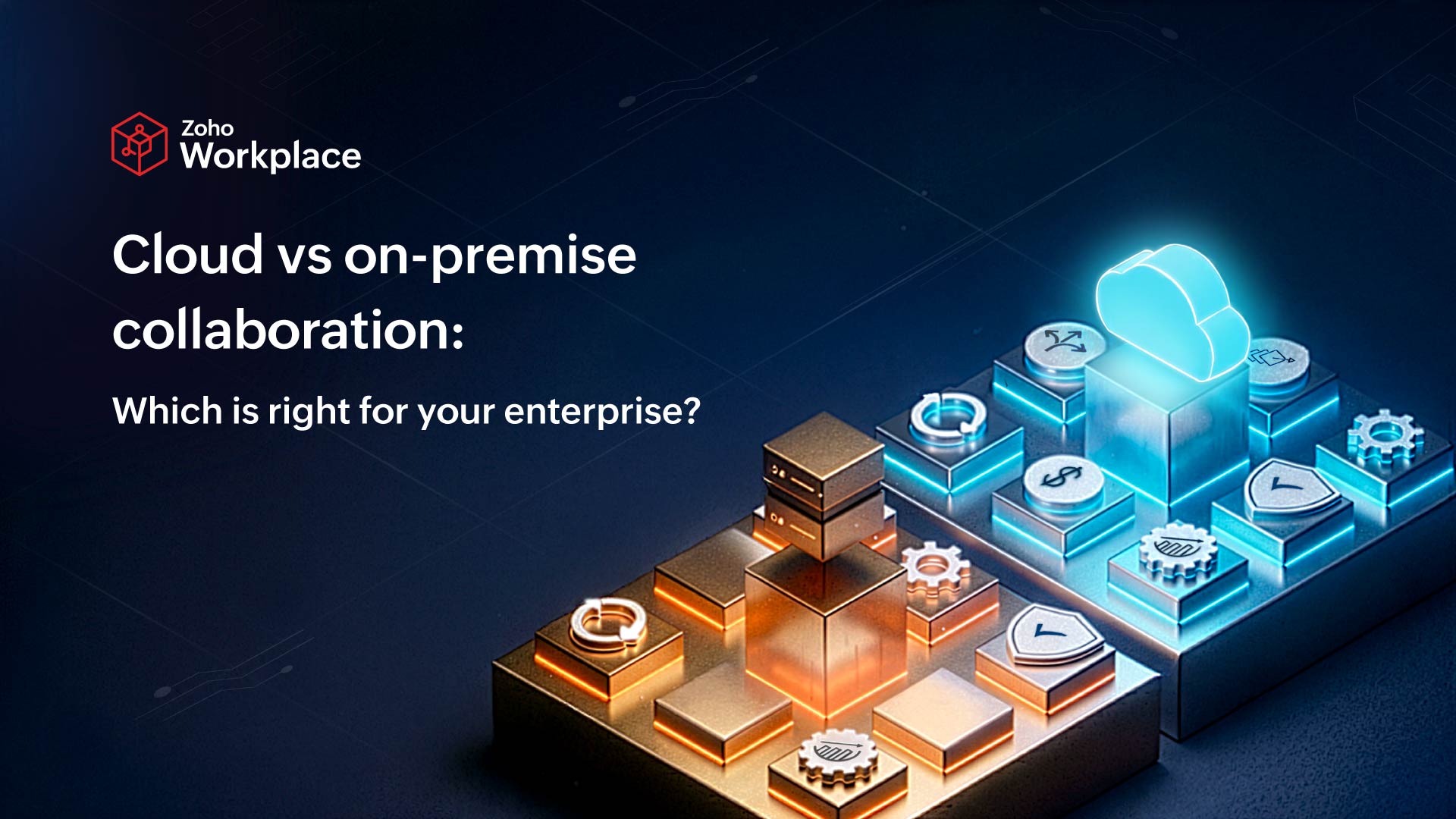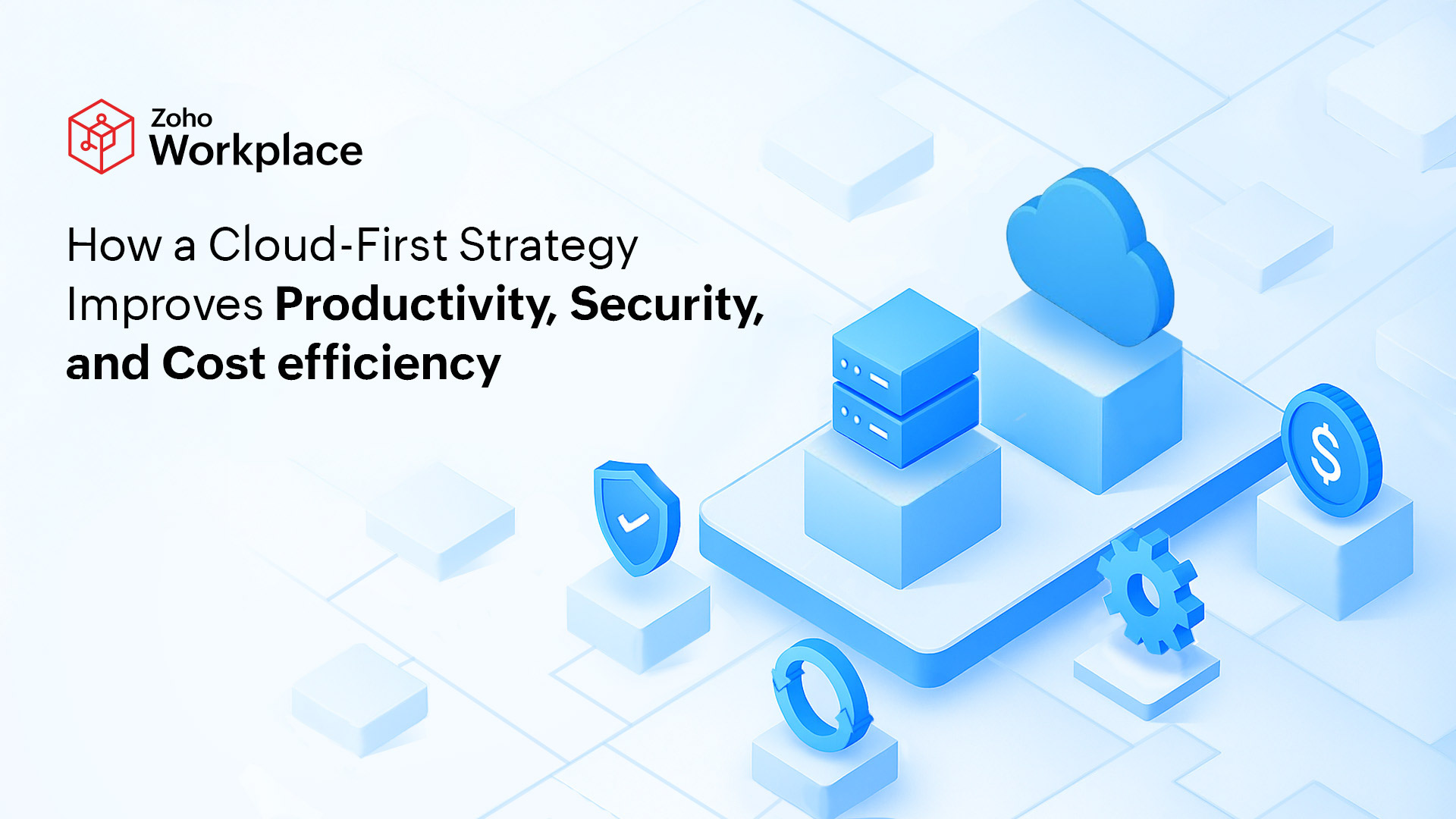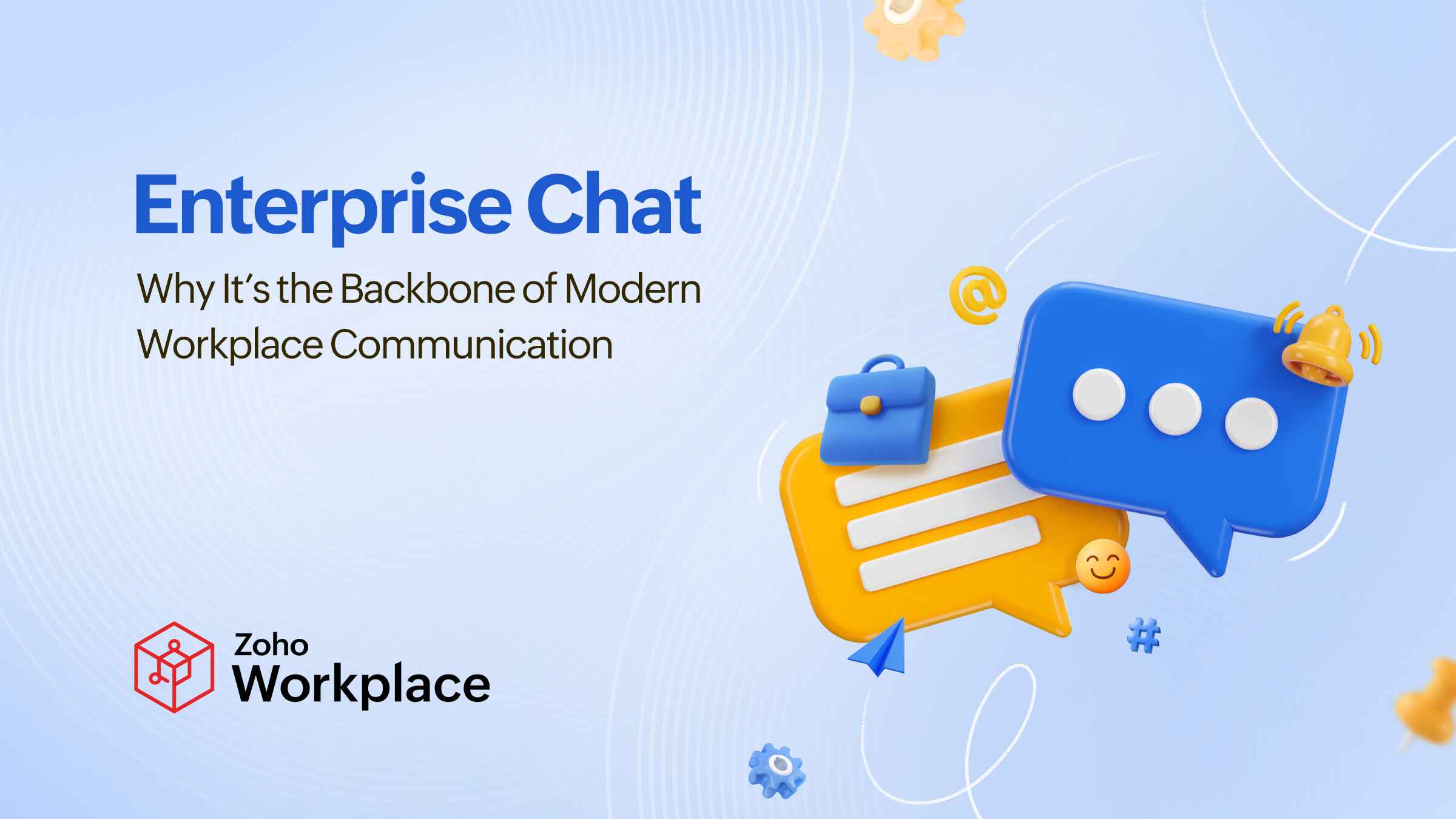- HOME
- All Topics
- Collaboration and Digital Workplace
- Why CIOs are moving away from legacy enterprise solutions to unified platforms
Why CIOs are moving away from legacy enterprise solutions to unified platforms
- Published : September 30, 2025
- Last Updated : September 30, 2025
- 250 Views
- 6 Min Read
The majority of products your organization relies on have a lifespan of five years. Yet many companies keep these products around for much longer, and it’s easy to see why. Transitioning from an old product to a new one takes time, money, and other resources, making these changes difficult to fit into day-to-day operations. But many of these old, outdated products come with serious risks and disadvantages, prompting many CIOs and other leaders to make the expensive shift to more modern options.
Legacy enterprise solutions, a term used to describe outdated software platforms, can create serious problems for the companies that use them, and many switch to modern, unified platforms.
Here’s why.

What’s the difference between legacy enterprise solutions and unified platforms?
Before discussing the importance of shifting from legacy enterprise solutions to unified platforms, we need to define these terms and the differences between them.
Legacy enterprise solutions
A legacy enterprise solution is any software platform used at scale within an enterprise that, for one reason or another, is considered outdated. These platforms have often been in use for some time, either mainly within that single enterprise or being common throughout an industry more broadly.
Microsoft XP is an example of a legacy enterprise solution. Despite newer operating systems, some organizations still used XP long after it became outdated. NASA, for example, still used Windows XP until 2013.
Unified platforms
A unified platform is a software tool that combines several features in one place and integrates data from multiple sources. A unified marketing platform, for example, helps marketers manage their digital marketing activities, fulfilling tasks like email automation, lead generation, and posting across multiple social media channels. Additionally, it’ll centralize customer data gathered from emails, forms, and other sources.
Zoho Workplace is an example of a unified platform that centralizes collaboration across departments, from sales to marketing to finance. As a modern platform, it’s regularly updated with new features, security updates, and more.
Why do enterprise organizations use outdated solutions?
There are many reasons why enterprises still use outdated software solutions, including:
- Resistance to change: People are generally resistant to change. But, at the enterprise level, even small changes can be expensive and have significant consequences.
- Needs and specifications: In some cases, legacy solutions offer a unique mix of capabilities that isn’t matched by a more modern solution. An enterprise organization would then have to replace a single solution with multiple platforms.
- The sunk cost fallacy: This logical fallacy describes the way in which people tend to stick to a path when they’ve invested heavily in it, despite that path not being productive. Essentially, the more an organization invests in an enterprise solution, the less likely they are to switch to another solution, even if it’s probably better for their needs.
- Industry trends: Some industries, like finance and healthcare, still have outdated solutions as their standard. Switching to a unified platform or other modern solution would mean pushing through layers of industry conditioning, as well as potentially creating compatibility issues when working with partners.
Why should CIOs move away from legacy enterprise solutions?
Transitioning from legacy enterprise solutions to unified platforms is expensive, risky, and a massive undertaking. That being said, these solutions bring significant risks and modern CIOs are faced with an era in which these solutions just don’t fit the bill any longer.
The disadvantages of outdated solutions
Using legacy enterprise solutions comes with some disadvantages that unified platforms don’t:
- Lack of features: Legacy enterprise solutions often lack features that have become standard in modern platforms. Think of AI, for example.
- Few (if any) updates: By definition, legacy solutions are either rarely updated by the original publisher or have reached their end-of-life date. That means their usefulness is artificially capped, and they can’t keep up with modern solutions.
- Difficult to support: Some legacy solutions are more difficult to support, modify, or upgrade because they’re outdated. For example, many industries use software built on COBOL, an outdated programming language that has fewer experts than modern languages.
The risks of outdated solutions
Outdated solutions aren’t just occasionally inconvenient. They come with significant risks with potentially far-reaching impacts. Risks like:
- Security breaches: A lack of regular updates doesn’t just make legacy enterprise solutions less relevant. It makes them more vulnerable to data breaches and other security issues.
- Expensive maintenance: Retailers spend 58% of their IT budget solely on maintaining legacy systems. They’re not the only industry to do so. This ties up resources and makes organizations less resilient as maintenance costs ramp up.
- Higher failure rates: Legacy systems are more likely to fail, potentially causing widespread issues that create significant costs for your organization.
Why now?
While legacy enterprise solutions have always carried risks and disadvantages, there are a few modern trends that make shifting from these platforms to modern solutions critical:
- The proliferation of SaaS tools: There was a time when CIOs had to choose between a few, expensive enterprise solutions for specific tasks. With hundreds, if not thousands, of SaaS tools available for just about every need, there’s too much choice to be shackled to an outdated platform.
- The importance of AI: AI is radically transforming the way organizations use technology, and legacy enterprise solutions rarely support this. Organizations that don’t make the switch to modern platforms may fall behind their competition.
- The spread of data breaches: Data breaches aren’t just more common than they once were, they’re more expensive, too. Using outdated platforms puts you at unnecessary risk that could be devastating for your organization.
How to migrate from legacy solutions to a unified platform
Knowing you need to make the switch from an outdated platform to a more modern one is one thing. Doing it properly is another. Here are some pointers for doing that.
Pick the right platform
Choosing the platform you’ll migrate to is just as serious as undertaking the migration itself. As you search for a new platform, keep a shortlist of competitors to your current solution, and evaluate them according to the following criteria:
- Security
- Features
- Price
- Integrations
- Scale
You can even score each platform with these criteria, making the process more data-driven.
Back up all data
Before you even begin migrating, you should back up everything in your legacy system. Even data that doesn’t seem relevant to your current operations could be in use in a department you don’t have visibility over. Back up everything you can, and have two different backup methods. Usually, IT professionals recommend one physical backup and one backup on the cloud.
Start with a small project
You may be tempted to migrate everything out of your legacy system as soon as possible, but this is rarely the right approach. Even if you’ve thoroughly researched your new platform, you don’t really know the impact it’ll have on your teams and their workflows until you’ve made the switch. That’s why it’s best to pick a few teams and a few business functions to test your migration before doing it across your organization.
Review the results of your project
Once you’ve run your small migration project for long enough—say a few months or a full quarter—you should review its results. How smooth was the migration? Are there any problems you need to address? How did training employees on the new platform go? These questions, and others, will allow you to improve your migration process and prevent potential issues.
Prepare systems for migration
Migrating from one platform to another isn’t as simple as flipping a switch, especially as you transition from a small pilot project to a full migration. Data in your original system may need to be cleaned and processed before being transferred to your new tool. You may need to test and use third-party integration solutions to migrate data at scale. Finally, you’ll want to kickstart training efforts on the new tool before you migrate a significant amount of data.
Migrate in stages
For most organizations, data migrations should happen in stages instead of all at once. You can split up your migration by department or project, depending on your priorities. It’s essential that you have stopping points between stages, like a buffer of sorts in case any issues force a rollback during your migration.
Keep both systems operational temporarily
Even after you’ve migrated the last bit of data from your old system to a new platform, you’ll want to keep both platforms live at least a little longer. That gives you time to fetch old data that was missed throughout your migration, copy over automations or settings from the old system, and ensure that everyone’s been properly trained on the new system.
Shut the old system down
Once you’re sure all of your data is in your new platform and your teams are trained on it, you can safely shut down your legacy enterprise solution.
Modernize your software
Legacy enterprise solutions can feel more comfortable than new platforms, especially if they’ve been in use at your organization for a while. But between the serious security risks, the lack of modern features, and the hidden costs associated with legacy systems, migrating to modern solutions should be a priority for every organization.
 Genevieve Michaels
Genevieve MichaelsGenevieve Michaels is a freelance writer based in France. She specializes in long-form content and case studies for B2B tech companies. Her work focuses on collaboration, teamwork, and trends happening in the workplace. She has worked with major SaaS brands and her creative writing has been published in Elle Canada, Vice Canada, Canadian Art Magazine, and more.


